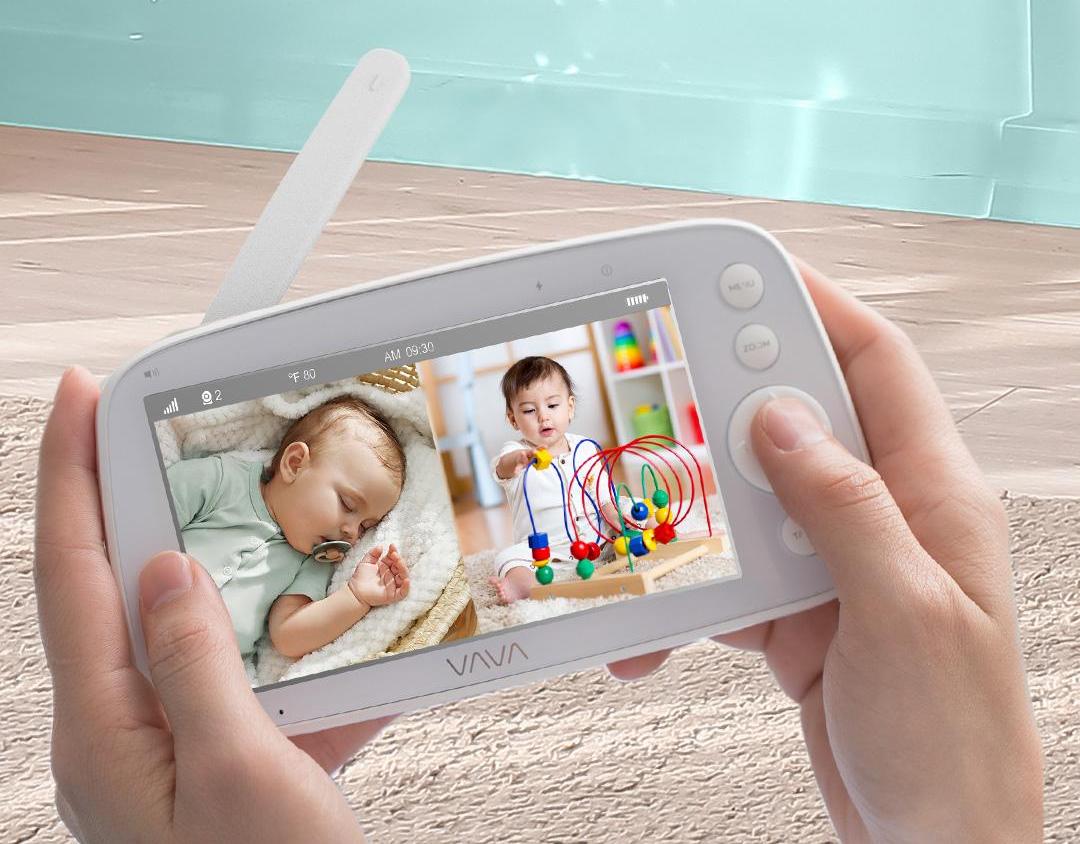With the advent of wearable breast pumps, Breastfeeding today is a remarkably different experience, giving mothers the amount of freedom to pump anywhere. Although handy, many moms ask if the pumps are as effective as their old-fashioned versions when it comes to maintaining milk production. The good news is that a wearable breast pump not only gives the advantage of hands-free pumping but also aids in maintaining your milk supply and even increasing it.
Synchronizing Supply & Pump Relationship
The milk-producing system in the body works according to the mechanics of supply and demand. This means that the more frequently and effectively milk is removed from the breasts, the more your body is prompted to supply more. This central principle applies when using a traditional pump or one of the best hands-free breast pumps out there. It's a matter of learning to get the most out of your wearable pump and send the right signals to your body.
Milk production goes through a 24-hour cycle, with prolactin levels naturally rising at night. It is because of this that it is worth being consistent with the day sessions of pumping, including early morning and evenings, to maintain a steady supply. With wearable pumps, it is very easy to be consistent because you don't have to hunt for a quiet place with electricity points, and you are able to stick to your daily routine.
Wearable Breast Pump Tips to Maintain Supply
Getting Fit and Setting Right for Optimum Performance
A proper flange fit is required to drain milk smoothly without injuring your milk supply. Most mothers are programmed to think that the larger the pump, the better, but in reality, a poorly fitted flange is not just painful, but can even decrease your milk flow. The entire concept is that your nipple ought to be able to glide in the tunnel with ease while the areola is not sucked into the flange when pumping.
The best hands-free breast pump is one that supports multiple levels of suction as well as suction patterns. It is best to start low suction in synchronization with your baby's initial suckling pattern and increase it gradually as your milk flows in. Don't forget, maximum suction isn't everything, but rather how to properly eject milk so mothers can feel at ease.
Perfecting the Timing
One of the best wearable breast pump tips you will have people talk about is consistency. Consistency can work wonders when it comes to milk supply pumping. You must pump more or less at about the same time daily to get into a routine with your body. If you're exclusively pumping, 2-3 hour blocks throughout the day are best for most mothers. If you're combo nursing and pumping, pump when you would normally nurse, just without the baby.
Don't rush the pumping sessions. While a session with a regular pump may take 15-20 minutes, wearable pumps take longer, around 20-25 minutes, to completely drain the breast. The unmatched convenience enables you to take longer sessions without disrupting your daily activities.
Fuel Your Body with the Power of Hydration and Nutrition
The more fluid your body holds, the more milk will flow. Breastfeeding women need approximately 13 cups of fluid a day, and more if pumping often. Always bring an empty water bottle with you, and do not wait until you are thirsty before drinking when you pump.
There is no particular diet to support milk supply, but certain foods like almonds, oats, greens, and fennel are believed to support milk production. A healthy diet can't be stressed enough because it supplies your body with the energy needed to sustain milk production.
Wearable Pump Strategies for Maximum Milk Supply
1. Power Pumping Sessions
Power pumping is equivalent to cluster feeding routines to boost prolactin levels naturally. A minimum of one hour needs to be spent on heavy pumping, either once or twice a week. Utilize this routine to increase milk supply - pumping for 20 minutes, resting for 10, then pumping for 10, resting for 10, then pumping for 10 minutes.
The reason that wearable breast pumps are hands-free is that power pumping sessions aren't as much of an inconvenience because you can simultaneously work on your computer, read, or do other things.
2. Accuracy in Scheduling
If your supply is less than usual, add one extra session to your pumping routine, preferably during peak productivity times like early morning hours when prolactin levels are highest. A brief 10-15 minute session can trigger your body to jumpstart production.
3. Take Advantage of Morning Hours
Night is when your hormones automatically build up, and hence, a pumping session during the morning can be the most productive. By ensuring that you are well hydrated and calm, you can derive the maximum benefits from it while giving yourself sufficient time to empty the breast completely.
Create an Ideal Environment for Pumping
Your environment is a determinant of your milk flow, wearable pumps or not. Calm pumping sessions are integral to this. Do whatever it takes to get relaxed, e.g., listen to soothing music, practice deep breathing exercises, or simply look at pictures and videos of your baby. Stress hormones will decelerate the natural flow of milk, so your pumping would best serve to associate positive images and memories with pumping.
Temperature is also a significant consideration that can influence how comfortable the mother feels, as well as the volume of milk. If it is cold outside, do a little warm-up of your pump parts before handling them, or you can use warm compresses on your breasts for a few minutes just before pumping.
Troubleshoot Your Breast Milk Supply
If you see your output going down, you should first look at your pumping routine. There can be no deviation from the prescribed routine, and your equipment should also be clean and in good condition. Replacing worn-out pump parts with new ones at times can restore pumping to normal.
You also need to factor in any major life changes that might have an impact on your supply, for example, sickness, stress, or hormonal changes because of menstruation. If you use hormonal contraceptives, this also influences the rate and extent to which milk is produced.
With all this in mind, plus your pumping schedule, you can have the most promising results.
How to Care for a Well-Functioning Pump
How long your wearable breast pump works depends on whether or not you bother to keep it in good shape. Clean all milk contact surfaces after each use and swap out parts where necessary, according to manufacturer guidelines. Worn valves, membranes, or flanges can all compromise suction efficiency, leading to decreased milk removal and possibly a decreased supply.
Store your wearable breast pump safely between sessions and ensure it is charged to preserve consistent suction pressure throughout sessions.
Pumping for the Long Haul: Maximizing Milk with Wearables
Breastfeeding is the natural method of feeding the young, but the supply journey differs from woman to woman. What suits one mother might require slight tweaking for another. Wearable breast pumps are very handy, so it's easier to pump frequently, which is the most crucial aspect of keeping your milk supply at high levels.
Monitor your pump output along with your baby's progress to determine if your present regimen is adequately addressing your household's needs.
Wondering where to find the best hands-free breast pump features? Explore VAVA ‘s wearable breast pump collection to embrace stress-free, comfortable pumping.





Share: